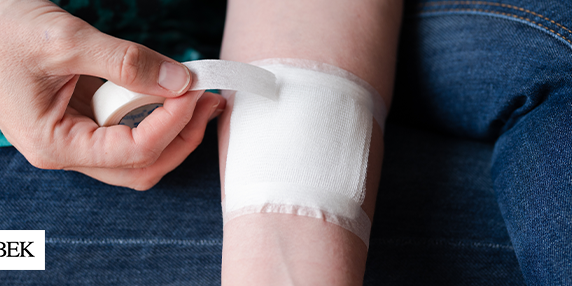When it comes to wound care, the right knowledge and supplies can make all the difference in healing. Whether you’re dealing with a minor cut or a more serious wound, understanding the basics of wound care is crucial. In this guide, we’ll cover the essentials of wound management and the types of supplies that can aid in a swift recovery.
Understanding Wounds and Healing
A wound occurs when there is a break in the skin, and the body’s natural healing process begins immediately. The healing process involves several stages, including hemostasis (stopping the bleeding), inflammation, proliferation (tissue growth), and maturation (tissue remodeling).
Cleanliness: The First Step to Healing
The initial step in wound care is to ensure the wound is clean. Gently wash the area with mild soap and water to remove any debris or bacteria. Avoid using harsh chemicals like hydrogen peroxide or alcohol, as these can damage the tissue and delay healing.
Choosing the Right Bandage
Selecting the appropriate bandage is vital for protecting the wound and promoting healing. Here are some common types of bandages and their uses:
- Adhesive Bandages: Ideal for small cuts and abrasions, adhesive bandages provide protection and absorb small amounts of exudate.
- Gauze Pads: For larger wounds, gauze pads can be used to absorb fluid and protect the wound from infection.
- Hydrocolloid Dressings: These dressings are perfect for wounds with light to moderate exudate. They create a moist environment that promotes healing and can stay in place for several days.
- Foam Dressings: Foam dressings are used for wounds with heavier exudate. They provide cushioning and can be left on for longer periods.
- Alginate Dressings: Made from seaweed, alginate dressings are highly absorbent and ideal for wounds with significant exudate. They form a gel-like substance when in contact with wound fluid, maintaining a moist environment.
The Role of Tapes and Wraps
Tapes and wraps are used to secure dressings in place. It’s important to choose a tape that is gentle on the skin but provides adequate adhesion. For those with sensitive skin, paper or silicone tapes are a good choice. Elastic wraps can be used to provide compression and support, especially for sprains or strains.
When to Change a Dressing
Dressings should be changed when they become wet or soiled. It’s also essential to monitor the wound for signs of infection, such as increased redness, swelling, or a foul odor. If you notice any of these signs, seek medical attention.
The Importance of Rest and Nutrition
Healing is not just about external care; it’s also about giving your body the rest and nutrition it needs. Ensure you’re eating a balanced diet rich in protein, vitamins, and minerals to support the healing process.
Conclusion
Wound care doesn’t have to be complicated. By following these essential tips and using the right supplies, you can ensure that wounds heal properly and efficiently. Remember, if you’re ever in doubt, consult a healthcare professional for advice.
For all your wound care supplies, Doubek Medical Supply is here to support you with quality products. Remember, effective wound management is a partnership between you and your healthcare professionals. Visit us today to find the right supplies for your journey to recovery.
Disclaimer: This blog post is intended for general informational purposes only and does not constitute medical advice. For personalized healthcare recommendations, please consult a qualified healthcare provider.

